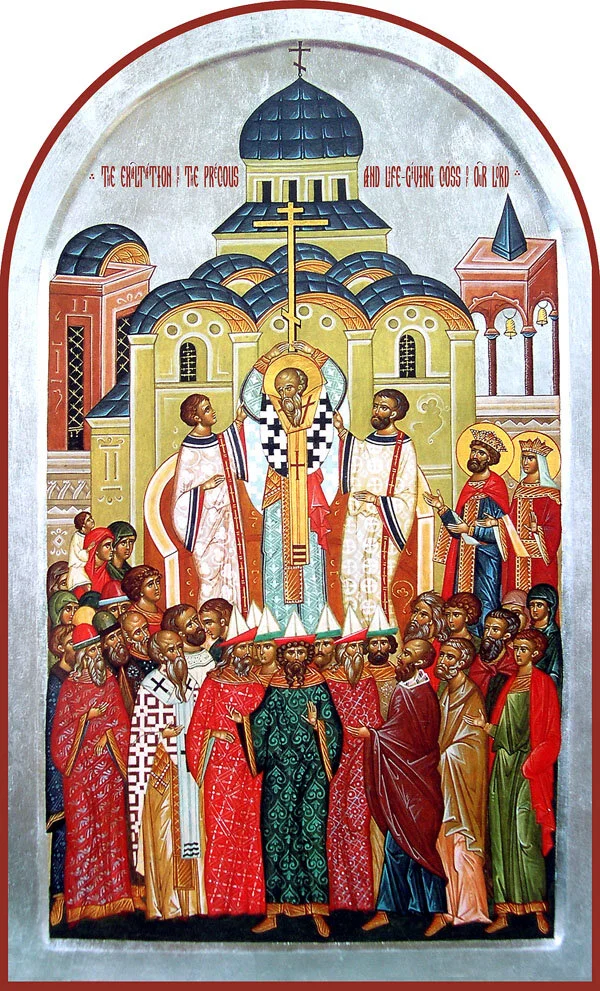On the 14 of September, 628 A.D., Emperor Herakleios finally entered his capital of Constantinople. It had been six years since his return, and his son Constantine, Patriarch Sergios (610-638 A.D.), the clergy, the Senate and the people received him on the coast of Asia Minor with olive branches and lighted candles, with hymns and acclamations of joy. Before him went the True Cross, and behind, four elephants. These were the first ever seen in Constantinople. The Emperor, though only in his mid-fifties, appeared old, worn out, and ill. But by the grace of God, through his efforts, the victorious Byzantine Empire dealt the death blow to its constant enemy, leaving the Persian army prostrate.
Read moreSeptember 14 - The Holy Feast of the Exaltation of the Holy Cross (Part II)

All were uncertain as to which of the crosses was the Cross of the Lord. At that moment a corpse was being carried by to be buried. Patriarch Macarius commanded those who bore the dead body to halt, and he had the crosses placed one after the other on the corpse. When the Cross of Christ was placed on him, the dead man immediately arose, resurrected by the Divine power of the Holy Cross of the Lord. The Empress joyfully took the Precious and Life-Giving Cross and bowed down before it and kissed it as did all the Imperial retinue accompanying her. Many of those present were unable to see the Holy Cross at that time because of the throng, and they begged that they might at least see it from a distance. Then the Patriarch of Jerusalem Macarius standing on an elevated place, lifted up the Precious Cross, showing it to all the people, who cried out "Kyrie Eleison" ("Lord have mercy!"). And this was the origin of the feast of the Exaltation (Elevation) of the Precious and Life-Giving Cross.
Read moreSeptember 14 - The Holy Feast of the Exaltation of the Holy Cross

Emperor Constantine the Great was born in 273/274 and reposed in Nicomedia in 337 A.D., sharing his feast with his mother, Saint Helen, equal-to-the Apostles, on the 31st of May. He distinguished himself in his youth in the service of Diocletian (284-305 A.D.) in the Egyptian and Persian wars. After those campaigns, he went to Gaul and Britain. After three battles he defeated Maxentius at last in October of 312 A.D. at the Milvian Bridge near Rome, making Constantine the sole ruler of the West.
Read more
